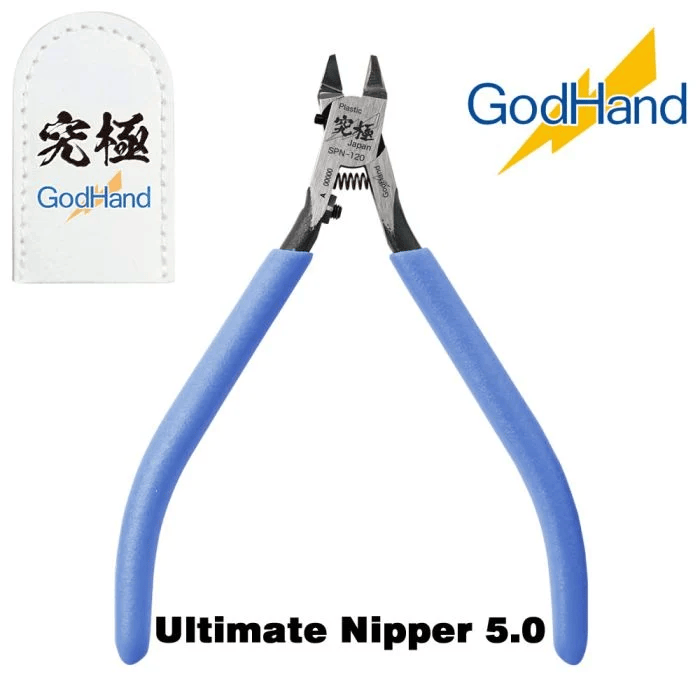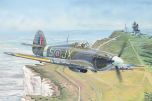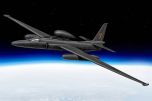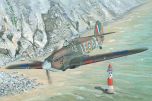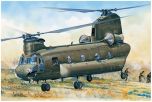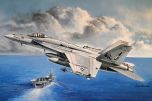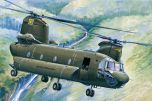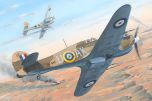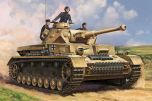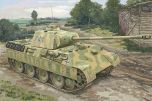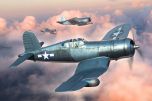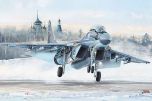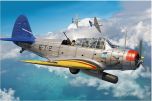Hobbyboss 1/48 German Pz Sfl.Iva Dicker Max # 84835
The Panzer Selbstfahrlafette IVa (Pz.Sfl.IVa) or "Dicker Max" was a German heavy tank destroyer developed during World War II.
It was designed to destroy heavily armored enemy tanks and fortifications from long range.
The name "Dicker Max," which translates to "Fat Max," was a nickname given to the vehicle by its crews due to its large size and powerful gun.
Design and Development:
The Dicker Max was based on the chassis of a heavily modified Panzer IV medium tank, but with an open-topped superstructure designed to mount a large, long-range anti-tank gun.
It was initially conceived as a self-propelled anti-bunker gun for engaging heavily fortified positions during the planned German invasion of the Soviet Union.
However, with the increasing threat of Soviet heavy tanks like the KV-1, the vehicle’s role shifted to that of a dedicated tank destroyer.
Armament:
The main weapon of the Dicker Max was the 105mm (10.5 cm) K 18 L/52 anti-tank gun, a powerful long-range weapon capable of penetrating thick armor at significant distances.
This gun was one of the most formidable on the battlefield at the time of the vehicle’s creation, designed to engage heavily armored Soviet tanks from long range.
The 105mm gun could fire a variety of shells, including armor-piercing (AP) rounds and high-explosive (HE) rounds, allowing it to destroy both tanks and bunkers.
The gun had an effective range of up to 2,000 meters (1.24 miles) against armored targets, making it a valuable asset in long-range engagements.
The gun was mounted in a fixed superstructure with a limited traverse, meaning that the vehicle had to reposition itself to aim at targets outside of a narrow arc.
Armor and Protection:
The Dicker Max had relatively thin armor, ranging from 10mm to 50mm, with most of its protection focused on the front of the vehicle.
While its frontal armor could protect against light anti-tank weapons and shrapnel, the sides and rear were vulnerable to enemy fire.
Its open-topped design left the crew exposed to air attacks, artillery fire, and small arms fire, making the vehicle more vulnerable in certain combat situations.
This design, however, allowed for better ventilation and reduced the weight of the vehicle, which was crucial for mobility.
Mobility:
Powered by a Maybach HL120 TRM engine, producing 300 horsepower, the Dicker Max had a top speed of 40 km/h (25 mph) on roads, with lower speeds off-road due to its weight and size.
Despite its powerful gun, the Dicker Max was somewhat underpowered for its weight, which limited its overall mobility and ability to rapidly reposition on the battlefield.
The vehicle had a combat weight of around 22 tons, making it relatively heavy for a tank destroyer of its size.
This weight, combined with its relatively weak suspension, limited its effectiveness in highly mobile warfare, but it was still well-suited for defensive and ambush roles.
Operational History:
Only two prototypes of the Dicker Max were built, and they were sent to the Eastern Front in 1941 for combat trials during Operation Barbarossa, the German invasion of the Soviet Union.
During the trials, the Dicker Max performed well as a long-range tank destroyer, successfully engaging Soviet tanks and fortifications at distances where enemy return fire was less effective.
However, one of the two prototypes was destroyed in an accidental fire, and the other saw limited service, primarily in defensive roles.
Despite its effectiveness as a tank destroyer, the vehicle’s open-topped design, limited mobility, and the shifting priorities of the German war machine meant that it never entered mass production.
The focus of German armored development shifted toward turreted tank destroyers like the Jagdpanzer IV and larger vehicles such as the Elefant and Jagdtiger.
Tactical Role:
The Dicker Max was best used in ambush or defensive positions, where it could take advantage of its long-range gun to engage enemy tanks before they could return fire effectively.
Its limited traverse and mobility meant that it struggled in more fluid, fast-paced combat situations.
In defensive operations, the Dicker Max was capable of knocking out even the most heavily armored tanks of the time, such as the Soviet KV-1, from long distances.
However, in close-range engagements, its thin side and rear armor, as well as its open-topped design, made it vulnerable to enemy infantry and artillery attacks.
Legacy:
Although the Dicker Max did not see widespread production or use, it represented an important step in the development of German self-propelled guns and tank destroyers during World War II.
Its powerful 105mm gun and role as a long-range tank destroyer influenced the design of future German tank destroyers, which prioritized heavy firepower and armor penetration at long distances.
The Dicker Max’s concept of a heavily armed, self-propelled tank destroyer was later refined in other designs like the Nashorn and Elefant, both of which saw greater production and combat use in later stages of the war.
Conclusion:
The Pz.Sfl.IVa Dicker Max was a unique, though short-lived, addition to Germany’s arsenal of tank destroyers during World War II.
It combined a powerful 105mm gun with an open-topped, lightly armored chassis, making it a deadly long-range weapon against enemy tanks and fortifications.
Although only two prototypes were built, and it never entered mass production, the Dicker Max demonstrated the effectiveness of long-range tank destroyers on the Eastern Front and paved the way for more advanced German tank destroyer designs later in the war.
Did you know we are the UK's largest GodHand Tools stockist and official UK distributor!
Check out their amazing Ultimate Nipper 5.0, which is the best Nipper on the market.
All Godhand tools are available for next-day delivery.

















 Spread the cost with Paypal Credit
Spread the cost with Paypal Credit
 Spread the cost with Klarna
Spread the cost with Klarna


